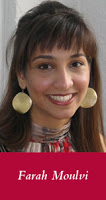PRIM&R is pleased to share a piece from the PRIM&R Blog Squad at the 2012 Institutional Animal Care and Use Committee (IACUC) Conference. The Blog Squad is composed of PRIM&R members who are devoted to blogging live from our conferences. This is Farah Moulvi’s second year serving as a member of the PRIM&R Blog Squad.
Spring is here and the buzz at the 2012 IACUC Conference (aside from whether your alma mater made it to the Sweet 16) was the impact of the Eighth Edition of the Guide for the Care and Use of Laboratory Animals, and how to proceed with implementing the required changes.
Most of us IACUC bookworms know that since the release of the Institute for Laboratory Animal Research’s (ILAR) Eighth Edition of the Guide, the IACUC world has changed. The Eighth Edition of the Guide, released in December of 2010 and copyrighted in 2011, is an update to the seventh edition, which was published in 1996.
Effective January 1, 2012, institutions that receive Public Health Service funding must base their animal care and use programs on the Eighth Edition of the Guide, and they must complete at least one semiannual program review and facilities inspection using the new edition as the basis for evaluation by December 31, 2012.
The release of the updated Guide was followed by a flurry of responses. From discussions on professional listservs to in-depth analyses by various institutions and organizations, everyone is talking about the Guide’s new standards. As such, it was no wonder that many sessions at the 2012 IACUC Conference focused on this topic. Panel II: Oversight Updates: AAALAC International, OLAW, and USDA was packed with IACUC stakeholders eager to gain insight into the updates and expectations for implementation of the changes.
Another session I attended, workshop C7, Science, OLAW, and the Adoption of the Eighth Edition of the Guide, also focused on this topic. Presented by Dr. Pat Brown, VMD, MS, DACLAM, director of OLAW; and Dr. William White, VMD, MS, DACLAM, corporate vice president of veterinary and professional services at Charles River Laboratories, this session provided attendees with information on how the Guide has expanded and offered an opportunity for attendees to discuss the changes.
Dr. White commented on how performance standards that deviate from the Guide might provide better conditions for animals as they may allow new information to be gained in the field. He added that the decision-making process for these deviations must be structured and must involve the IACUC to determine acceptability. If an IACUC approves such a departure from the Guide, key performance indicators should be monitored.
It was very interesting to hear the buzz about the updated Guide in the corridors, at lunch breaks, and during the question-and-answer sessions throughout the conference. With the 2012 IACUC Conference behind me, I am eager to take the insight I gained back to my institution. As now is the time for all of us IACUC administrator worker bees to get back to work and to get “buzzy” with the work that is ahead of us!


No comments! Be the first commenter?